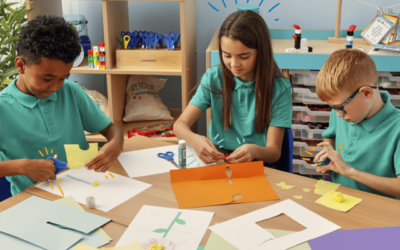Messy play: Malleable materials for early years
In early years, messy play with malleable materials provides so much opportunity for babies and toddlers to emerge themselves in sensory activities. Malleable materials allow for early years children to explore new feelings, sensations, and outcomes.
Little Learners Nurseries explored with different materials and discovered a wide range of learning opportunities that come from using malleable materials in play.
Messy Play: Malleable materials
A malleable material is something that can transformed. Whether it be through our hands, the use of tools, or by combining other elements to change its properties, malleable materials really do have unlimited potential.
From birth we have the innate drive to explore the world around us, and malleable materials provide the perfect opportunity to investigate in such a wide-ranging manner, as our senses and skills become more complex through repetition, scaffolding and trial and error.

Learning opportunities
The benefits of using malleable materials are so vast and develop rapidly as children develop and grow. In fact, we believe that there is no limit to the benefits (for children and adults) presented by having the opportunity to explore, transform and create.
Here is just a few:
- The sensorial experience: malleable materials evoke such a sensory experience, and can utilise all 5 senses: sight, smell, taste, sound and touch.
- The freedom to create: there is no right or wrong way to use malleable materials. It’s all about the individual moving and creating how they feel in that moment. Who knows what they’ll create, but that’s the best bit.
- Mastery of the materials: this includes the malleable material itself, and the tools used (whether this be actual equipment or the body). The more you use malleable materials, the more you explore and test your own theories, the further your exploration grows, and skills deepen.
- Extending our knowledge of the world: We find that malleable materials offer great opportunities to replicate things we see every day (structures, objects, animals), making choices based on our ideas and experiences.
From messy jelly, playdough, clay and plasticine to mud, mashed potato, and cornflour; anything can be achieved with malleable materials. It’s all about the continuous provision, those resources you add along the way and how you, as an adult, interact with the materials too.
You could also use:
- A variety of rolling pins
- Natural materials of different shapes and sizes (shells, sticks, pinecones etc)
- Loose parts, such as beads and buttons
- Wire, string and pipe cleaners
- Clay tools, sticks, and brushes
- Water
- Tissue paper
Something to consider
It’s all about the exploration… Place the block of clay, playdough etc in the middle of the table/floor tray and just play. Get to know how it feels, smells and looks.
Sit back and observe how the children interact with the materials. What could you add to enhance this further? Keep looking back on the children’s adventure with the malleable materials to see how their play develops. Keep researching with them and celebrate the successes as they come.
By Nicola Cargill – Pedagogical Lead at Little Learners Childcare


Related blogs
Your Guide to the School-Based Nursery Capital Grant
What is the School-Based Nursery Capital Grant? For schools aiming to enhance their nursery facilities, the School-Based Nursery Capital Grant provides a simple funding solution. This grant is open to eligible state-funded primary schools in England that...
What Goes In, Must Go Out
Creating a Circular Economy in Your Nursery Author: Nick Corlett Sustainability Manager at LEYF Sustainability is more than a trend—it’s a shared responsibility, and the nursery is the perfect place to nurture these skills. Every day...
Top tips to create a SEND-Friendly Primary School Classroom
Author Lindsay Robinson Lindsay Robinson has been a primary school teacher for 23 years and is passionate about achieving the very best outcomes for children through quality first teaching and experiences. I remember receiving very little guidance during my teacher...


